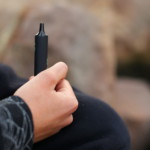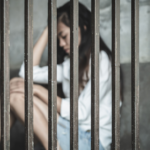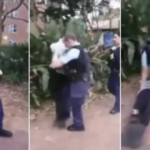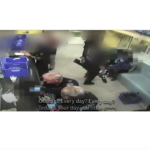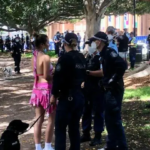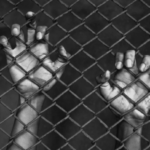Police Officers Assault Youth in Adult Watchhouse
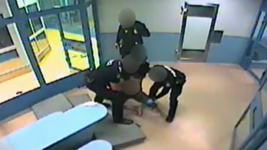
Footage emerged last week that shows a 17-year-old First Nations boy standing in a room in a Queensland police watchhouse. And at first glance, and without any details of the incident about to unfold, the boy appears to be walking around in his prison cell, but it’s actually the exercise yard.
At the time, an issue was brewing as Jason, the detainee, had dragged his mattress out from his cell into the “exercise yard” and was also causing a ruckus calling out to other inmates.
Minors aren’t meant to be locked up in adult watchhouses, as the conditions are designed to deal with adults for short periods, and Jason had been there for five days at the time of the incident.
Officers on duty had been calling on Jason to move his mattress back into his cell over the intercom, and after a bit of back chat, he began taking his bedding into his cell, which is when two armed police officers stormed the “exercise yard” and attacked the teen.
One of the officers even pulled out a baton and smacked it into the kid’s legs three times, to ensure he toppled over. And Jason claims he was choked by that officer as he swung the rod at him. The two officers then generally beat upon the teen, until a third rushed in to get in on the action.
This happened on 7 August last year, which was a fortnight before the Queensland police minister was to introduce an amendment to ensure that kids can continue to be held in adult watchhouses, but only temporarily until in December 2026, despite the fact that this violates human rights law.
After the officers were finished with assaulting the boy, Queensland police then charged him with assaulting and obstructing a police officer, which was a charge later dropped.
And if this sounds like the police were trying it on a tad, well, welcome to Queensland.
Bad consequences for bad language
The ABC’s 7.30 Report asked Queensland Police Service chief superintendent Rhys Wildman, who oversees South Brisbane district, about the incident and the force that officers had applied to the youth, who was detained in Richlands watchhouse over car theft and a number of related charges.
“This is an isolated incident,” explained the superintendent, who does consider the use of force applied was warranted. “Unfortunately, on occasions where use of force does occur, it comes down to individual situations and decisions made by individual officers.”
“The offender actually grabbed the officer around the waist and that is how it turned into a wrestling situation on the ground,” the senior officer said, as he absolved those on duty, and he then gives a clincher reading of the event that’s quite masterful in refuting any accusation of excessive force.
“To use three individuals to restrain one person, just then reinforces the level of aggression that the officers were facing at that particular moment,” the chief superintendent said.
ABC journalist Alexandra Blucher put it to Wildman that the footage shows that Jason had already begun putting his mattress back in his room, which was the point of contention, when the officers set upon him. “So, are you comfortable with that use of force?” Blucher asked.
“The information that we have is that the behaviour displayed by that young person led the officers to actually utilise that use of force,” Wildman responded.
And when pushed on the behaviour, he added, “Well, I won’t go into detail about the language, but there were complaints from other individuals in the watchhouse, prisoners that were housed in the watchhouse, and the officers had to make a decision to relocate that young person into that cell.”
So, in Queensland police watchhouses, which have now become holding cells for kids, who are forced to sit in their cells with no direct sunlight and are allowed to exercise in a larger cell, foul language still carries the force to offend to the point that it may warrant a beating with a baton.
Rights protected to a point
Queensland police have been placing minors in adult watchhouses even though they’re not supposed to be used upon them for a number of years now.
This prohibition is due to the harshness of these environments and because adult prisoners are neither supposed to be coming into any contact with youth detainees, who can be as young as 10 in the sunshine state.
And the practice came under increasing scrutiny early last year when it came to light that one youth had been held for 39 days in a watchhouse, even though these facilities are only supposed to hold adults for up to 48 hours at a time.
Right before the minister passed a law facilitating it last August, a legal team challenged the practice, on behalf of three youths held in a watchhouse. But this failed in terms of obtaining a ruling on the question of the practice being unlawful, as no specific court orders had placed the kids in the centre.
In order to facilitate this law, that allows children as young as 10 to be locked up in adult watchhouses, the Queensland government had to suspend its Human Rights Act 2019 (Qld), for the obvious reason that this law violates the basic rights of these children.
And this was not the only travesty perpetrated by the then Palaszczuk government last year, as it actually suspended the Human Rights Act in March as well, when it passed a bill containing a series of tough-on-youth-crime measures, with a youth breach of bail offence being the rights violating law.
First Nations targeted
On an average night in Australia, Queensland detains more youths in child prisons than any other jurisdiction by a long shot. So, on an average night in June last year, that state was detaining 306 youths in facilities, while in second place was NSW, which was detaining 186 a night.
And the hidden truth amongst all these statistics is that the Queensland criminal justice system, like all such state and territory systems, disproportionately locks up Aboriginal and Torres Strait Islander youths despite they’re making a up a small portion of the population.
So, on an average day over 2021-22, there were 266 youths in Queensland youth prisons and of these 177 were First Nations kids, which accounts for 66 percent of the child prisoner population.
However, Aboriginal and Torres Strait Islander peoples only account for about 5 percent of that state’s population.
And while similar such disproportionate locking up of First Nations youth is common across the continent, this tendency to crackdown on youth crime, which again appears to target Indigenous kids, is also increasingly being implemented nationwide as more jurisdictions pass such laws.


